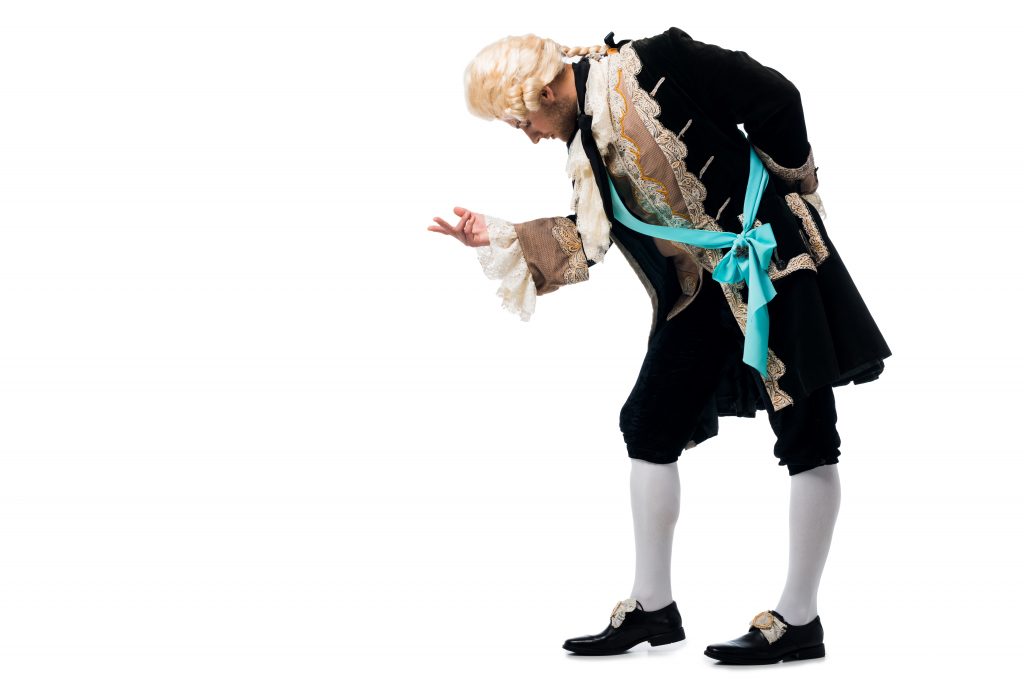“The position of the USPTO could potentially change with each presidential administration, and stability in patent law could thus be significantly undercut if the courts were required to defer to such shifting positions on issues of substantive patent law.”
 In response to a request for supplemental briefing from the Federal Circuit in Facebook v. Windy City Innovations, the U.S. Patent and Trademark Office (USPTO) recently argued that its precedential panel opinions interpreting the America Invents Act (AIA) are entitled to Chevron deference, under which (essentially) courts must defer to an agency interpretation of a statute so long as the interpretation is reasonable. To the extent that this bid for Chevron deference is limited to procedural administrative Patent Trial and Appeal Board (PTAB) matters such as the one at issue in that case, (an interpretation of 35 U.S.C. § 315(c) which relates to the USPTO Director’s ability to join a party in inter partes review [IPR]), it is arguably defensible. But to the extent that the agency claims (or plans to claim) that its precedential PTAB opinions are owed deference on issues of substantive patent law, it is likely incorrect.
In response to a request for supplemental briefing from the Federal Circuit in Facebook v. Windy City Innovations, the U.S. Patent and Trademark Office (USPTO) recently argued that its precedential panel opinions interpreting the America Invents Act (AIA) are entitled to Chevron deference, under which (essentially) courts must defer to an agency interpretation of a statute so long as the interpretation is reasonable. To the extent that this bid for Chevron deference is limited to procedural administrative Patent Trial and Appeal Board (PTAB) matters such as the one at issue in that case, (an interpretation of 35 U.S.C. § 315(c) which relates to the USPTO Director’s ability to join a party in inter partes review [IPR]), it is arguably defensible. But to the extent that the agency claims (or plans to claim) that its precedential PTAB opinions are owed deference on issues of substantive patent law, it is likely incorrect.
Deference Under Mead
The basis for this distinction lies in the agency’s Congressional grant of authority. According to the Supreme Court decision in Mead, “administrative implementation of a particular statutory provision qualifies for Chevron deference when it appears that [1] Congress delegated authority to the agency generally to make rules carrying the force of law, and [2] that the agency interpretation claiming deference was promulgated in the exercise of that authority.” United States v. Mead Corp., 533 U.S. 218, 226-27 (2001). The Court in Mead thus set forth two distinct requirements; first, that there be a delegation of authority from Congress, and second, that the agency interpretation claiming deference be a proper exercise of that authority.
The first requirement of Mead, the delegation of authority, is likely met for procedural PTAB issues, but not for substantive patent law issues. Although the AIA does explicitly provide the USPTO with authority to prescribe regulations “establishing and governing inter partes review,” 35 U.S.C. § 316(a)(4), Congress has made no such grant of authority to the USPTO with respect to issues of substantive patent law. See, e.g., Merck & Co. v. Kessler, 80 F.3d 1543, 1549-50 (Fed. Cir. 1996) (explaining that Congress has authorized the PTO to “promulgate regulations direct only to ‘the conduct of proceedings in the PTO,’ but not ‘to issue substantive rules’”); Ass’n for Molecular Pathology v. U.S.PTO, 687 F.3d 1303, 1357 (Fed. Cir. 2012) (Bryson, J., concurring in part dissenting in part) (“the PTO lacks substantive rulemaking authority as to issues such as patentability”).
When, in exercising its procedural rulemaking authority, the USPTO issues notice and comment regulations governing the conduct of IPR, such regulations are likely entitled to Chevron deference. This was the case in Cuozzo, where the Supreme Court deferred under Chevron to the USPTO’s (subsequently revoked) regulation providing for the broadest reasonable construction claim interpretation standard in IPR. See Cuozzo Speed Techs., LLC v. Lee, 136 S. Ct. 2131, 2146 (2016) (“the Patent Office’s regulation, selecting the broadest reasonable construction standard, is reasonable”). Similarly, in SAS Institute, the Supreme Court applied the Chevron framework to the USPTO’s regulation allowing for the use of “partial institution” in IPRs, but avoided deferring by finding that the PTO’s interpretation of the statute was unreasonable. See SAS Inst., Inc. v. Iancu, 138 S. Ct. 1348, 1358 (2018) (“we are left with no uncertainty that could warrant deference”).
Problems with the USPTO Brief
On these sorts of procedural issues where the USPTO has been delegated the authority to prescribe regulations with the force of law, it is not absurd to suggest that the USPTO can do the same thing through precedential adjudicatory PTAB panel opinions. But it would be another thing altogether, and likely incorrect, to say that the USPTO precedential panel opinions are owed Chevron deference on issues of substantive patent law, where the USPTO lacks the authority to speak with the force of law in the first place. Although the USPTO’s brief in favor of Chevron deference at times seems to limit itself to procedural issues, in other places the brief seems to at least suggest that the agency is arguing for (or considering arguing for) deference even on more substantive patent law issues. See Facebook, Inc. v. Windy City Innovations, LLC, No. 18-1400, Brief For The United States as Amicus Curiae at *5 (Fed. Cir. Sept 17, 2019) (“POP Opinions Interpreting The AIA Are Entitled To Chevron Deference.”); cf. id. at n.2.
Any such argument for substantive patent law deference would seem to rely on the USPTO’s authority to engage in relatively formal adjudication to infer a claim to authority for interpreting substantive patent law. Quoting Mead, the USPTO brief argues that it “is fair to assume generally that Congress contemplates administrative action with the effect of law when it provides for a relatively formal administrative procedure tending to foster the fairness and deliberation that should underlie a pronouncement of such force.” Id. But in Mead, there was no question that the agency had generally been delegated the authority to interpret the statutory provision at issue; the question was whether the agency had properly exercised that authority, (and the Court found that it had not). See Mead Corp., 533 U.S. at 232 (“We are not, of course, here making any global statement about Customs’s authority, for it is true that the general rulemaking power conferred on Customs, see 19 U.S.C. § 1624, authorizes some regulations with the force of law”). At the outset, the Court noted that “19 U.S.C. § 1500(b) provides that Customs ‘shall . . . fix the final classification and rate of duty applicable to . . . merchandise.’” Id. at 221-22. The question was whether “classification rulings, like Customs regulations, deserve Chevron deference,” id. at 226, but there was no dispute that Customs did have the authority to issue regulations on the topic which would have been entitled to Chevron deference.
By contrast, the USPTO has no such general rulemaking power on issues of substantive patent law. So even if the PTAB precedential adjudications are considered to be “relatively formal,” (which they arguably are), the first requirement for Chevron deference is still missing when it comes to substantive patent law. Even on procedural issues where the USPTO does enjoy a grant of authority to issue regulations, it is questionable whether precedential PTAB adjudication would qualify as a proper exercise of that authority. See Aqua Prods. v. Matal, 872 F.3d 1290, 1333 (Fed. Cir. 2017) (en banc) (Moore, J., dissenting) (“where Congress delegated the agency rulemaking authority to be exercised through regulation, I cannot agree to extend Chevron deference to agency rulemaking through other means”). Deferring to PTAB adjudications could encourage the USPTO to avoid the notice and comment rulemaking process.
Furthermore, even “precedential” PTAB adjudication deviates from the requirements for “formal adjudication” under the Administrative Procedure Act (APA) in multiple ways: (1) it uses Administrative Patent Judges employed directly by the USPTO, rather than the more insulated Administrative Law Judges employed by the Office of Personnel Management, and (2) appeals from PTAB opinions go directly to the Federal Circuit; there is no ability to appeal for review within the agency as a whole. See John M. Golden, Working Without Chevron: The PTO As Primer Mover, 65 Duke L. J. 1657, 1658 (2016) (explaining that PTAB adjudication is “not technically ‘formal’ in the standard APA sense”).
These deviations from technically formal adjudication under the APA arguably mean that the PTAB cannot speak with the force of law through adjudication even on issues where it has the authority to do so through regulation. But even if not, they should confirm that authority to speak with force of law on issues of substantive patent law cannot be inferred from the PTAB’s ability to engage in formal-like adjudication. Such an inference is even more implausible given that Congress created the Federal Circuit to be the primary authority (aside from the Supreme Court) on issues of substantive patent law. Cf. Cleveland Clinic Found. v. True Health Diagnostic LLC, 760 Fed. Appx. 1013, 1020 (Fed. Cir. Apr. 1, 2019) (nonprecedential) (“While we greatly respect the PTO’s expertise on all matters relating to patentability, including patent eligibility, we are not bound by its guidance.”); In re Diagnostics, 800 F.2d 1077, 1084 (Fed. Cir. 1986) (Markey, J.) (discussing “the congressionally envisioned role of this court, i.e., to contribute to doctrinal stability in the field of patent law”).
A Threat to Consistency in Patent Law
The position of the USPTO could potentially change with each presidential administration, and stability in patent law could thus be significantly undercut if the courts were required to defer to such shifting positions on issues of substantive patent law. The USPTO in its brief to the Federal Circuit argues that Chevron deference is “particularly sensible” where the issue is “one governing the process of adjudication itself.” See Windy City, supra, at *9. But Chevron deference is at most sensible only on such issues, and any Federal Circuit opinion accepting the USPTO’s position should be very careful to make clear that it is not endorsing the USPTO’s argument with respect to issues of substantive patent law, so as to ensure that the Federal Circuit can continue to fulfill its role as the authority on such issues.
Image Source: Deposit Photos
Image ID: 275231882
Copyright: HayDmitriy

![[IPWatchdog Logo]](https://ipwatchdog.com/wp-content/themes/IPWatchdog%20-%202023/assets/images/temp/logo-small@2x.png)

![[Advertisement]](https://ipwatchdog.com/wp-content/uploads/2024/04/Patent-Litigation-Masters-2024-sidebar-early-bird-ends-Apr-21-last-chance-700x500-1.jpg)

![[Advertisement]](https://ipwatchdog.com/wp-content/uploads/2021/12/WEBINAR-336-x-280-px.png)
![[Advertisement]](https://ipwatchdog.com/wp-content/uploads/2021/12/2021-Patent-Practice-on-Demand-recorded-Feb-2021-336-x-280.jpg)
![[Advertisement]](https://ipwatchdog.com/wp-content/uploads/2021/12/Ad-4-The-Invent-Patent-System™.png)







Join the Discussion
One comment so far.
Mr. V
October 4, 2019 05:22 pmWhat about Cuozzo Speed Technologies, LLC v. Lee?